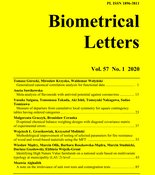
Biometrical Letters Vol. 57(1), 2020, pp. 63-84


High Nature Value farmlands in Europe are of greatest importance in the conservation of biodiversity. Their environmental importance has been recognized for some time, and has been studied mostly in Western Europe. This article describes the results of multivariate statistical analyses performed on data (13 variables) collected from the latest National Agricultural Census and the CORINE database to provide a typology of farmlands with respect to their nature value at municipality level (LAU 2, Local Administrative Units level 2) across Poland. All municipalities were grouped into eight categories (types). Some of the farmland categories were considered to be High Nature Value farmland (HNVf). The following interrelated variables mostly contributed to the identification of HNVf: share of protected areas and forest, grassland, arable land and fallow, farmland cover diversity, and rate of nitrogen fertilization. HNVf was identified in 958 out of 2173 municipalities, covering 44% of the territory of Poland. The identified HNVf also overlaps partially (61%) with LFAs (Less Favored Areas). Farmlands with the highest nature value are located mostly across mountain and hilly areas, close to forests, and protected areas on lowlands and river valleys. The identified HNV farmlands are characterized by low-input farming systems and a large share of semi-natural habitats with a high landscape mosaic.

agricultural intensity, farmland typology, landscape ecology, less favored areas, mapping farming types, multivariate analysis

